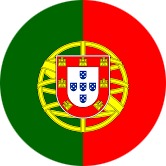Introduction
This Power System Protection training course covers the fundamentals of protecting a power system against hazards posed by abnormal system conditions, such as short-circuit faults. An overview of the protective devices available for application, both industrial and utility, is presented along with typical means of implementing these devices. Both electromechanical and digital relays are discussed. Fuse selection and coordination is explored in depth. Utility-specific protective devices, such as reclosers and sectionalizers, are presented, and utility-specific protection strategies, such as fuse-saving and fuse-blowing are covered. This Power System Protection training course allows the delegates to apply techniques learned in this course to realistic protection scenarios.
This training course will feature:
- Philosophy of protective relaying and protection strategies
- Electromechanical relay operating principles and microprocessor implementations
- Radial system protection – time-coordinated overcurrent protection
- Instrument transformers
- Differential and distance relays, including pilot protection
What are the goals?
- Comprehend protective relaying philosophies and choose appropriate protection strategies
- Understand how electromechanical relays work and how they are emulated by microprocessors
- Design a properly coordinated overcurrent protection system for a radial distribution system
- Properly specify instrument transformers for protection applications
- Design protection schemes utilizing differential and distance relays, including pilot protection
Who is this training course for?
- Engineers and technicians new to the power industry
- Intermediate-level engineers and technicians responsible for power system protection
- Professionals involved with developing protection schemes to improve reliability
- Facility engineers and consultants who conduct protection studies
- Engineers tasked with assessing the effectiveness of protection schemes
Course Outline
- Day One: Introduction, Math Review, Symmetrical Components and Sequence Networks:
- Protection introduction
- Phasor math
- Per-unit calculations
- Symmetrical components
- Sequence networks
- Fault modeling
- Day Two: Electromechanical and Digital Relays, Relay Schemes for Radial Systems, Time-Coordinated Overcurrent Protection:
- Electromechanical relay operating principles
- Microprocessor-based relay implementation
- Instantaneous and time overcurrent relays
- Reclosers and sectionalizes
- Time-current curves
- Device coordination
- Day Three: Relay Schemes for Networked Systems and Device Protection:
- Distance relays
- Distance relays with pilot protection
- Differential relays
- Differential relays for bus protection
- Differential relays for generator protection
- Differential relays for transformer protection
- Day Four: Effect of Protection on Reliability:
- Reliability indices
- Fault clearing time and reclosing
- Effects of nearby faults
- Fuse saving strategy
- Fuse blowing strategy
- Intelligent protective devices
- Day Five: Arc Flash Hazard and a Look to the Future:
- Shock hazard versus burn/blast hazard
- IEEE 1584 and NFPA 70E
- Personal protective equipment
- Hazard labeling
- A look to the future: communication-based overcurrent protection
- A look to the future: intelligent sectionalizing

























































